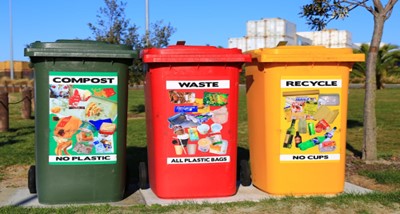In recent years, there has been a growing awareness of the environmental impact associated with large-scale events, including music festivals. While these festivals provide an opportunity for music lovers to come together and celebrate their favorite artists, they also leave a significant footprint on the planet.
Amidst this concern, there’s a glimmer of hope as many music festivals around the world are taking proactive steps to reduce their environmental impact and promote sustainability. In this blog post, we’ll explore how live music events and music festivals are embracing eco-friendly practices, engaging attendees in environmental education, and paving the way towards a greener future.
Green Initiatives at Music Festivals
Popular music festivals including Glastonbury, Coachella, and Bonnaroo are implementing eco-friendly practices to reduce their environmental footprint. Each of them focuses on different details of production to make sure they are being environmentally friendly.
- Glastonbury Festival in the UK, which has a robust sustainability program focusing on initiatives such as waste reduction, composting, renewable energy usage, and water conservation.
- Coachella Valley Music and Arts Festival in California places emphasis on implemented measures of recycling, composting, and promoting carpooling to reduce its environmental impact.
- Bonnaroo Music & Arts Festival in Tennessee, offers incentives for attendees who participate in recycling programs.
They also actively promote eco-friendly transportation options like shuttle services and bike rentals.
These simple initiatives can have a great impact over making music festivals eco-friendly. It is heavily encouraged that other festivals and live events look at these green measures, recognize their success, and include them in their own plans and strategy to make their events greener.
Sustainability Spotlight: Eco-Conscious Artists
Book musicians and bands who are actively involved in environmental advocacy or incorporate sustainability into their music careers. Artists who have vocalized a passion and care for the environment will be more willing to go along with eco-friendly safety measures. Not to mention, they will undoubtedly make a conscious effort to minimize their own carbon footprints when traveling to the event and during their performances. Example of such artists include:
- Jack Johnson, known for his environmental activism and efforts to reduce single-use plastics on tour is very passionate about sustainability. He and his wife even founded the Kokua Hawaii Foundation to support environmental education in Hawaii’s schools and communities, as well as the Johnson Ohana Charitable Foundation to support environmental, art and music education worldwide.
- Pearl Jam, which has supported various environmental causes through their musical career. They put a great amount of effort into raising funds for wildlife conservation and climate change initiatives.
- Billie Eilish, who has used her platform to speak out about environmental issues such as climate change and ocean pollution. She has sung about the importance of climate multiple times, refuses to fly private to minimize her carbon footprint, and even follows a Vegan diet.
Zero-Waste Music Festivals: Success Stories and Challenges
In recent years there have been a few festivals who have not only placed emphasis on green initiatives but completely canceled out waste at their events. A great way to learn from these success stories is to study the practices they used to stay true to a totally green goal. Below are music festivals that have successfully achieved zero-waste or significantly reduced waste generation.
Examples include:
- Shambhala Music Festival in Canada, which has implemented comprehensive waste diversion programs, resulting in over 95% of waste being diverted from landfills.
- Byron Bay Bluesfest in Australia, which aims to achieve zero-waste status by implementing measures such as composting, recycling, and reusable service ware.
- WOMAD (World of Music, Arts and Dance) festivals worldwide, which have committed to reducing waste through initiatives like reusable cups, compostable service ware, and on-site waste sorting stations.
While eliminating waste may seem extremely challenging, adopting certain practices utilized by these music festivals would be a great step in the right direction.
The Carbon Footprint of Live Music Festivals and Events
Live music events are an integral part of our cultural landscape, bringing people together to celebrate music and create unforgettable experiences. However, behind the scenes of these vibrant gatherings lies a significant environmental footprint, primarily driven by transportation emissions, energy consumption, and waste generation.
In this section, we will delve deeper into the carbon footprint of live music events, exploring the various factors contributing to their environmental impact and the importance of implementing sustainable practices to mitigate harm.
- Transportation Emissions:

-For instance, a study conducted by researchers at the University of Manchester analyzed the carbon footprint of music festivals in the UK. It found that transportation emissions, including those from attendee travel and logistical operations, accounted for a substantial portion of the overall emissions. The study highlighted the need for festivals to consider transportation strategies to reduce carbon emissions, such as promoting carpooling, providing shuttle services, and encouraging the use of public transportation options. Energy Consumption
- Energy Consumption
-Energy consumption during live music events, particularly from lighting, sound systems, and stage production, contributes significantly to their carbon footprint. Traditional energy sources such as fossil fuels are often used to power these activities, leading to greenhouse gas emissions.
-Implementing energy-efficient lighting and sound systems, as well as utilizing renewable energy sources like solar or wind power, can help reduce the carbon footprint of music festivals. For example, festivals like Coachella and Glastonbury have invested in renewable energy infrastructure, such as solar panels, to power stages and facilities, thereby reducing their reliance on fossil fuels and lowering their carbon emissions.
- Waste Generation

-To address this issue, festivals can implement waste reduction and recycling programs, as well as promote the use of compostable or reusable materials. For instance, some festivals have banned single-use plastics and incentivized attendees to use refillable water bottles and reusable service ware. These initiatives help minimize waste generation and promote a more sustainable approach to event management. An event app can replace printed program materials as well, thereby reducing paper waste.
The carbon footprint of live music events encompasses transportation emissions, energy consumption, and waste generation. By implementing sustainable practices such as promoting eco-friendly transportation options, utilizing renewable energy sources, and reducing waste generation, music festivals can mitigate their environmental impact and contribute to a greener future.
Green Vendor Partnerships

- Patagonia’s collaboration with outdoor music festivals like Telluride Bluegrass Festival and Newport Folk Festival. The company sets up a “Worn Wear” repair station at the festivals to encourage attendees to repair and reuse their clothing instead of buying new.
- REVERB’s partnership with music festivals such as Bonnaroo and Outside Lands to promote eco-friendly practices and provide resources for waste reduction, recycling, and carbon offsetting.
Past Music Festivals That Failed to Prioritize Environmental Measures
While many music festivals strive to be environmentally conscious, there have been instances where festivals have faced criticism for not prioritizing sustainability. Examples include:
- Fyre Festival (2017): Fyre Festival gained infamy for its disastrous organization and lack of consideration for environmental impact. The festival, promoted as a luxurious event in the Bahamas, failed to provide adequate
infrastructure, accommodations, and basic necessities for attendees. The aftermath of the festival left behind significant environmental damage, including litter and waste strewn across the festival grounds and surrounding areas.
- Reading and Leeds Festival (Various Years): Despite being one of the UK’s largest and most popular music festivals, Reading and Leeds Festival has faced criticism for its environmental practices. Concerns have been raised about excessive waste generation, including the widespread use of single-use plastics, and inadequate recycling and waste management facilities
- Ultra-Music Festival (Various Years): Ultra Music Festival, held annually in Miami, Florida, has faced scrutiny for its environmental impact, particularly regarding noise pollution and waste generation. Complaints from local residents about noise levels and disruption have led to discussions about the festival’s sustainability practices and its impact on the surrounding environment.
It’s worth noting that while these festivals may have faced criticism for their environmental practices in the past, many organizers have since taken steps to improve sustainability and reduce their environmental footprint. This often includes implementing waste reduction initiatives, promoting eco-friendly transportation options, and raising awareness about environmental issues among attendees.
Conclusion
As music festivals continue to evolve, so too do their efforts to minimize their environmental footprint and promote sustainability. From zero-waste initiatives to eco-conscious artist collaborations, these events are proving that it’s possible to enjoy live music while also caring for the planet.
By highlighting the successes and challenges of these sustainability efforts, we hope to inspire more music festivals to prioritize environmental stewardship and engage attendees in the journey towards a more sustainable future. Whether you’re a festivalgoer or a music industry insider, there are countless opportunities to support and contribute to these important initiatives. Together, we can harmonize our love for music with a commitment to protecting the planet for generations to come.
Related Posts:
Accessibility Planning for Live Events
Music Festival Economics

 They also actively promote eco-friendly transportation options like shuttle services and bike rentals.
They also actively promote eco-friendly transportation options like shuttle services and bike rentals. infrastructure, accommodations, and basic necessities for attendees. The aftermath of the festival left behind significant environmental damage, including litter and waste strewn across the festival grounds and surrounding areas.
infrastructure, accommodations, and basic necessities for attendees. The aftermath of the festival left behind significant environmental damage, including litter and waste strewn across the festival grounds and surrounding areas.

